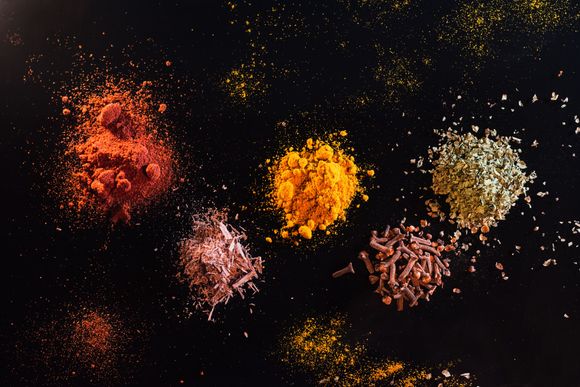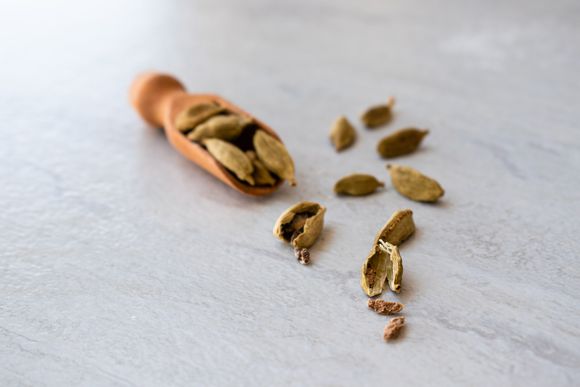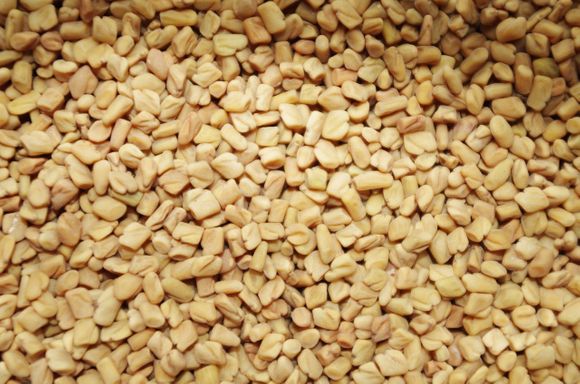Author: Rositsa Tashkova, Master of Molecular Biology and Microbiology
There is hardly a person who can draw a clear and definite line between herbs and spices. Each aromatic herb can find its place in the kitchen and be a healthy complement to the dishes we prepare for ourselves and our family.
That’s no secret to the Indians, who are known for their spicy, lavishly seasoned dishes, but also for their traditions in folk medicine. Fortunately, today these spices are easily available, and most likely after reading this article, you will find that you actually have them in your pantry at this moment.
Spices are rich in various substances and trace elements - vitamin B, C, iron, calcium, antioxidants. Some of them have antibacterial properties. It is a curious fact that since the 1980s plants used for spices around the world, as many as 50 are grown and produced in India.
Spices are rich in various substances and trace elements - vitamin B, C, iron, calcium, antioxidants. Some of them have antibacterial properties. These are cinnamon, cloves, cumin, turmeric, and cardamom, which inhibit the growth of enterococci. A curious fact is that of the 80 plants used for spices around the world, as many as 50 are grown and produced in India.
Various parts of the plants are used for spices: flower buds (cloves), seeds (cumin and cumin), fruits (black pepper), stamens (saffron), bark (cinnamon), roots (ginger and turmeric).

We invite you to a delicious, fragrant, and healthy journey in the world of Indian spices. Here we will meet::
Let's go! :)
Clove (Syzygium aromaticum)
Few people know that once the dried flower buds of cloves have been used by dentists to relieve toothache and because of their antiseptic properties. Clove oil is used for similar purposes to this day, especially after tooth extraction. Clove extract kills bacteria that cause gingivitis and helps heal the disease. [ref.1]
Cloves contain manganese, vitamin K and the powerful antioxidant eugenol, which is responsible for most of the beneficial properties of the plant. Note that in large quantities it is toxic to the liver.

The large amount of manganese in cloves makes it useful for improving bone density and growth, which is especially important for people suffering from osteoporosis. [ref.2]
There is evidence that cloves can improve the condition of those suffering from ulcers, high blood sugar, acne and skin irritations. It can also be taken in the form of tea.
Cinnamon (Cinnamomum sp.)
For many of us, the aroma of cinnamon is associated with Christmas sweets and milk with rice - a fragrance of happiness and childhood.
Cinnamon as a spice is prepared from the inside of the bark of the plant. Scientists believe that its main active substance, which is also responsible for its physiological effects, is cinnamaldehyde.
The spice contains some of the most powerful antioxidants (polyphenols) and can be used as a natural preservative and as an anti-inflammatory agent [ref.3].

Cinnamon is also important for the prevention of cardiovascular disease. It has been found to lower LDL-cholesterol levels, triglycerides while maintaining stable or even raising levels of "good" HDL cholesterol. [ref.4]
The spice also helps increase sensitivity to the hormone insulin and lowers blood sugar levels, making it useful for people suffering from insulin resistance and type 2 diabetes.
There is also evidence of beneficial effects for the prevention of cancer and neurodegenerative diseases, such as Alzheimer's disease and Parkinson's disease. [ref.5]
Coriander (Coriandrum sativum)
Both the leaves and the seeds of the plant - dried, whole, or powdered - are used for spice.
Coriander is rich in antioxidants, including quercetin. It has anti-inflammatory action, in some cases, it can lower high blood pressure and cholesterol. [ref.6]

It is believed that due to its antioxidant and anti-inflammatory effect it can improve the quality of life of people suffering from neurodegenerative diseases, Alzheimer's disease, multiple sclerosis, which are often associated with inflammatory processes.
Coriander is used as an appetite suppressant in traditional Iranian medicine, for better digestion, and as a sedative.
Cardamom (Elettaria cardamomum)
Cardamom, sometimes called karadmom, is an Asian spice from the ginger family typical of India, Malaysia, Sri Lanka, and Iran. Dried and sometimes ground seeds are used as a spice in tea.
The spice is rich in antioxidants, has a diuretic effect and seems to lower blood pressure - three factors that are interrelated.

Cardamom has anti-inflammatory properties and has been shown to help stomach ulcers by inhibiting the growth of the bacterium that causes it, Helicobacter pylori. [ref.7].
It has an antibacterial effect against other pathogens and can be used for fresh breath and against the formation of caries. Some people like to chew whole grains of cardamom after eating.
Cumin (Cuminum cyminum)
Cumin is used as a spice in the form of whole seeds, seed powder or essential oil. It contains most of the essential amino acids.
In folk medicine it is used as a means of restoring appetite, against cramps, stomach problems, gas, also for anti-inflammatory, antifungal, and antibacterial purposes.

Science also confirms the benefits of cumin for good digestion. It contains substances that increase the activity of digestive enzymes and the secretion of bile juices. [ref.8]
The spice contains many useful substances - phenols, terpenes, alkaloids, flavonoids, antioxidants and is a rich source of iron. It can improve the condition of people with diabetes and help them control their blood sugar levels.
Turmeric (Curcuma longa)
Turmeric has innumerable health benefits, mainly due to the substance curcumin. These include:
- Anti-inflammatory action;
- Powerful antioxidant;
- Improves brain functions;
- Lowers the risk of cardiovascular disease;
- Helper in the fight against cancer;
- To prevent and combat Alzheimer's disease;
- Against arthritis;
- Anti-depression;
- Anti-aging.

For better absorption of curcumin, it is good to combine it with black pepper, as it contains the substance piperine, which increases the absorption of curcumin by 2,000%![ref.10]
Fenugreek (Trigonella foenum-graecum)
The ground seeds of the plant are used. They contain iron, magnesium and manganese.
According to several studies, the intake of fenugreek tea increases the amount of breast milk in nursing mothers. [ref.11].
There is evidence that it increases testosterone and libido levels in men.
It can lower blood sugar levels and help patients with diabetes control them, as well as lower the amount of "bad" LDL cholesterol and total cholesterol.

Each of these spices is affordable, easy to use, and last but not least - delicious. Variety is the basis of healthy eating, and when healthy eating is delicious, then we are talking about some magic spice. :)









